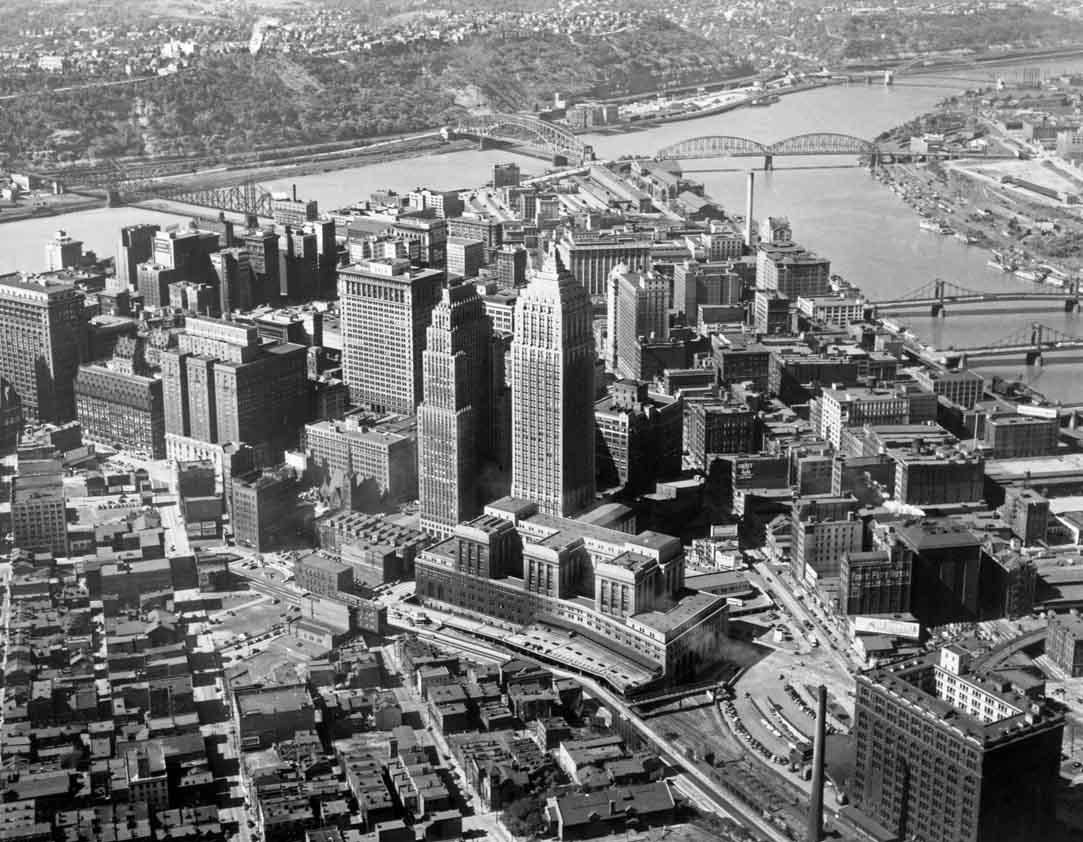What if?

I asked myself:
what if some metro areas kept the same share they used to have in previous decades, in the 2010 US total population? I've chosen
1940,
1950,
1960 and
1970, as most of very important US cities peaked (in relative terms) in one of those years:
1940
Detroit ----------- 6,934,000
Pittsburgh -------- 6,246,000
Cleveland -------- 4,776,000
St. Louis --------- 4,162,000
Cincinnati -------- 2,794,000
Buffalo ----------- 2,769,000
Scranton-Wilkes -- 1,923,000
Rochester -------- 1,633,000
Youngstown ------ 1,318,000
Toledo ----------- 1,186,000
Wheeling ----------- 898,000
1950
Detroit ----------- 7,675,000
Pittsburgh -------- 5,730,000
Cleveland -------- 4,931,000
St. Louis --------- 4,137,000
Cincinnati -------- 2,782,000
Buffalo ----------- 2,723,000
Rochester -------- 1,572,000
Scranton-Wilkes -- 1,482,000
Youngstown ------ 1,281,000
Toledo ----------- 1,179,000
Wheeling ----------- 763,000
1960
Detroit ----------- 8,142,000
Cleveland -------- 5,261,000
Pittsburgh -------- 5,159,000
St. Louis --------- 4,100,000
Cincinnati -------- 2,878,000
Buffalo ----------- 2,698,000
Rochester -------- 1,559,000
Youngstown ------ 1,281,000
Toledo ----------- 1,164,000
Scranton-Wilkes -- 1,136,000
Wheeling ----------- 648,000
1970
Detroit ----------- 8,166,000
Cleveland -------- 5,097,000
Pittsburgh -------- 4,535,000
St. Louis --------- 4,035,000
Cincinnati -------- 2,757,000
Buffalo ----------- 2,455,000
Rochester -------- 1,633,000
Youngstown ------ 1,173,000
Toledo ----------- 1,111,000
Scranton-Wilkes -- 1,000,000
Wheeling ----------- 556,000
------------------------------------------------------------------------------------------------
Their actual population in
2010:
Detroit ----------- 5,389,392
Cleveland -------- 3,186,301
St. Louis --------- 2,971,220
Pittsburgh -------- 2,574,959
Cincinnati -------- 2,301,251
Buffalo ----------- 1,392,886
Rochester -------- 1,175,001
Toledo ------------- 740,588
Youngstown -------- 673,614
Scranton-Wilkes ---- 659,809
Wheeling ----------- 293,881
Their actual population in
1970,
1960,
1950 and
1940:
Code:
Detroit ----------- 5,374,245 --- 4,728,828 --- 3,762,146 --- 2,968,221
Cleveland --------- 3,354,435 --- 3,055,011 --- 2,417,121 --- 2,045,169
Pittsburgh -------- 2,985,376 --- 2,996,726 --- 2,808,917 --- 2,673,634
St. Louis --------- 2,656,681 --- 2,381,996 --- 2,028,507 --- 1,781,564
Cincinnati -------- 1,814,571 --- 1,670,548 --- 1,363,845 --- 1,196,474
Buffalo ----------- 1,615,870 --- 1,567,314 --- 1,335,142 --- 1,186,113
Rochester --------- 1,075,152 ----- 905,250 ----- 769,668 ----- 699,148
Youngstown ---------- 771,488 ----- 743,529 ----- 627,418 ----- 563,726
Toledo -------------- 732,303 ----- 676,029 ----- 578,742 ----- 507,885
Scranton-Wilkes ----- 659,415 ----- 659,690 ----- 726,851 ----- 823,290
Wheeling ------------ 365,352 ----- 376,093 ----- 373,146 ----- 384,445
------------------------------------------------------------------------------------------------
Definition (CSAs, MSAs and µSAs as 2012):
Buffalo, NY --- the five northwesternmost NY counties
Cincinnati, OH-KY-IN --- Cincinnati CSA and Ripley, Switzerland, Mason, Adams and Highland counties
Cleveland, OH --- Cleveland CSA, Sandusky MSA and Ashland, Norwalk and Wooster µSAs
Detroit, MI --- Detroit CSA, Adrian µSA and Shiawassee County
Pittsburgh, PA --- the ten southwesternmost PA counties
Rochester, NY --- Rochester CSA and Yates County
St. Louis, MO-IL --- St. Louis CSA and Greene, Randolph, Gasconade, Montgomery and Ste. Genevieve counties
Scranton-Wilkes Barre, PA --- Scranton-Wilkes Barre MSA and Susquehanna and Wayne counties
Toledo, OH --- Toledo CSA and Henry County
Wheeling-Steubenville, WV-OH --- Wheeling and Steubenville MSAs and Harrison County
Youngstown, OH-PA --- the current CSA
------------------------------------------------------------------------------------------------
---
Pittsburgh peaking in
1940, meaning today
6,246,000 people. It would be as heavy as Houston. Note with this size, Pittsburgh would capture other counties around, including the heavily populated Wheeling-Steubenville area, pushing the 7 million people barrier;
---
St. Louis also peaked in 1940, but the decline was not as pronounced as Pittsburgh's;
---
Buffalo-Rochester with
4,402,000 people (1940) or
4,295,000 (1950) or
4,257,000 (1960) or
4,088,000 (1970), posing a big challenge to Toronto's "supremacy" over Lake Ontario;
---
Youngstown's decline really accelerated in the 1970's, like Detroit's and unlike it's next door neighbour, Pittsburgh.



